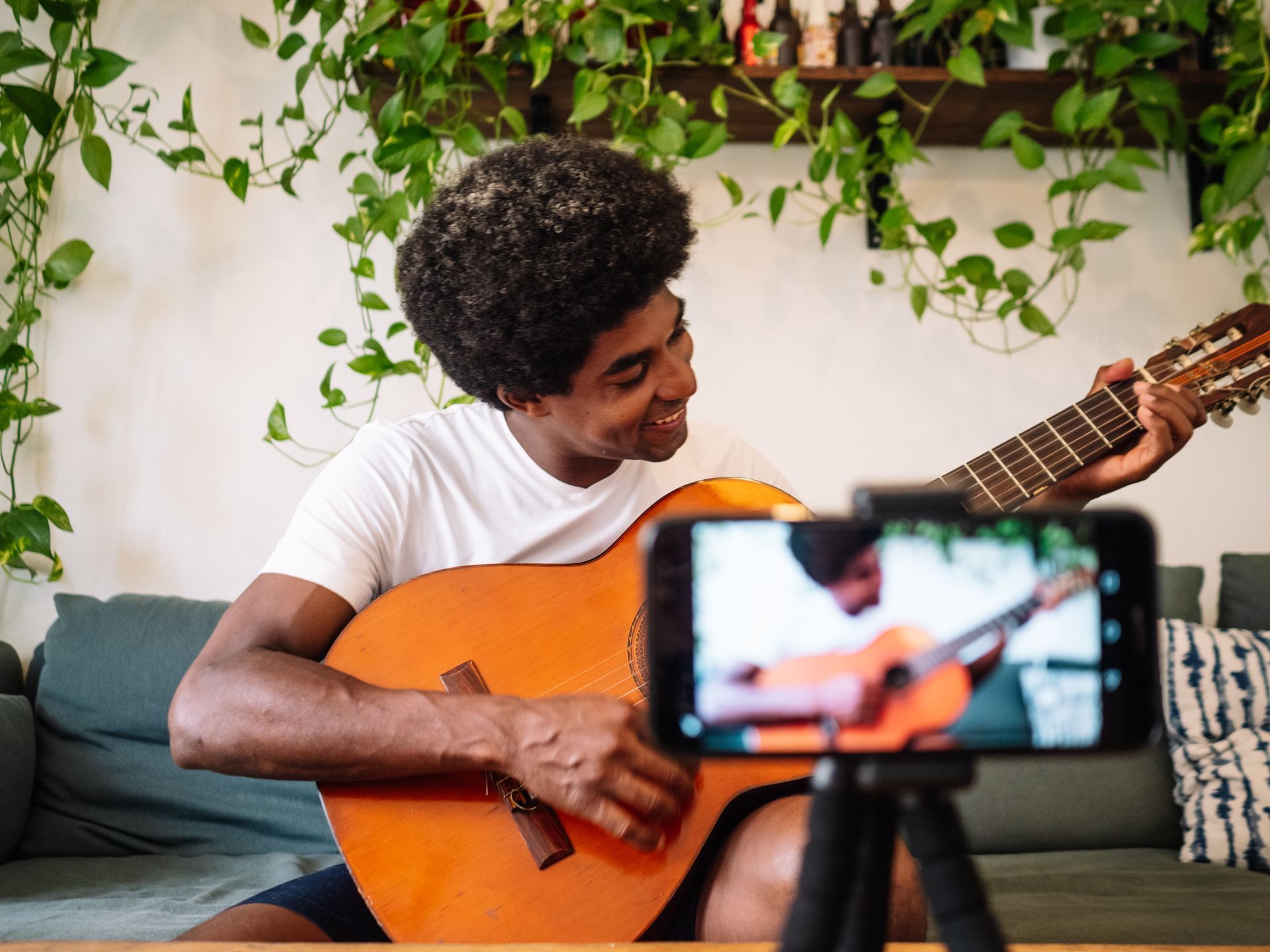How to Start Playing Guitar: A Beginner’s Guide
Learning to play guitar is an exciting and fulfilling journey that opens up a world of creative possibilities. For absolute beginners, the idea of picking up a guitar can feel overwhelming, but with the right guidance, anyone can master the basics and enjoy the process.
In this guide, we’ll provide step-by-step instructions for beginners on how to start playing the guitar. From choosing the right guitar to developing essential techniques, you’ll gain the confidence needed to begin your musical journey.
Why Learn to Play Guitar?
The guitar is one of the most versatile and accessible instruments in the world. Here are just a few reasons why it’s a fantastic instrument to learn:
• Diverse genres: You can play everything from classical and jazz to rock and pop.
• Portability: Unlike larger instruments, you can easily carry a guitar with you.
• Budget-friendly: Acoustic guitars, in particular, are affordable for beginners.
• Creativity and expression: The guitar offers endless opportunities to express yourself musically.
Additionally, the vast guitar learning community ensures you’ll never feel alone. There are countless resources, forums, and online lessons to support your progress.
Choosing the Right Guitar
Acoustic vs. Electric Guitar
One of the first steps in your guitar journey is choosing between an acoustic and an electric guitar. Each type has unique advantages:
Acoustic Guitar
• Perfect for beginners because it requires no additional equipment (like amps).
• Helps build finger strength due to its heavier strings.
• Produces a rich, unplugged sound ideal for genres like folk, country, and pop.
Electric Guitar
• Easier on your fingers with lighter strings and a thinner neck.
• Requires additional equipment (amplifier and cables).
• Great for rock, metal, and jazz enthusiasts due to its wide range of sounds and effects.
👉 Tip: Try both types at a music store to see which feels most comfortable and matches your musical interests.
Getting Familiar with Your Guitar
Understanding the different parts of the guitar is crucial for beginners:
• Body: The large part that produces sound.
• Neck: The long section where you press strings and play chords.
• Frets: The metal strips on the neck that help you find notes.
• Strings: Typically six strings, each producing different notes.
• Tuning Pegs: Used to adjust the pitch of the strings.
Tuning Your Guitar
Invest in a guitar tuner or use a tuning app to keep your guitar in tune. Practicing with a well-tuned guitar ensures your playing sounds pleasant and helps you develop a good ear for music.
Basics of Playing Guitar
Holding the Guitar
• Sit up straight and hold the guitar comfortably in your lap.
• For right-handed players, the neck should be in your left hand, while the body rests on your right leg.
• If left-handed, consider a left-handed guitar or restring a right-handed one.
Learning Basic Chords
Start with simple chords like G, C, D, and E minor. Practice transitioning smoothly between them, as this is the foundation for playing songs.
Strumming Techniques
Develop your rhythm by starting with a basic downstroke strumming pattern. Gradually incorporate upstrokes and experiment with different patterns to add variety to your playing.
Developing Your Guitar Skills
Practice Regularly
• Aim for 20–30 minutes of focused practice daily.
• Focus on specific areas like chords, scales, or songs during each session.
• Consistency is key to building muscle memory and confidence.
Play Along with Songs
Practice with beginner-friendly songs to apply what you’ve learned. Start with simple tunes and progress to more challenging pieces over time.
Use Online Resources
Take advantage of:
• Video tutorials
• Guitar learning apps
• Online forums to connect with other beginners and experienced players
Overcoming Common Challenges
Finger Pain
Beginner guitarists often experience finger pain. This is temporary and will decrease as you develop calluses on your fingertips.
• Take breaks if necessary.
• Make sure your guitar is set up properly to reduce strain.
Staying Motivated
• Set small, achievable goals.
• Celebrate milestones, such as learning a new song or chord progression.
• Join a community or find a practice buddy to stay accountable.

Beginner-Friendly Guitar Exercises
Here are a few exercises to improve your skills:
• Finger Exercises: Play scales to increase finger dexterity.
• Chord Progressions: Practice transitioning between chords to improve timing.
• Scale Practice: Start with the pentatonic scale to build a foundation for solos and improvisation.
Tips for Long-Term Success
• Be Patient: Progress takes time, so enjoy the process and celebrate small victories.
• Listen to Music: Immersing yourself in music will enhance your ear and inspire your playing.
• Record Yourself: Track your progress by recording practice sessions to identify areas for improvement.
Conclusion
Learning how to start playing guitar as a beginner can feel overwhelming at first, but with dedication and the right strategies, you’ll be amazed at how quickly you progress. Whether you’re playing for personal enjoyment or preparing to perform on stage, the journey of learning guitar is one of self-expression and growth.
So pick up your guitar today, start practicing, and let the music flow!

